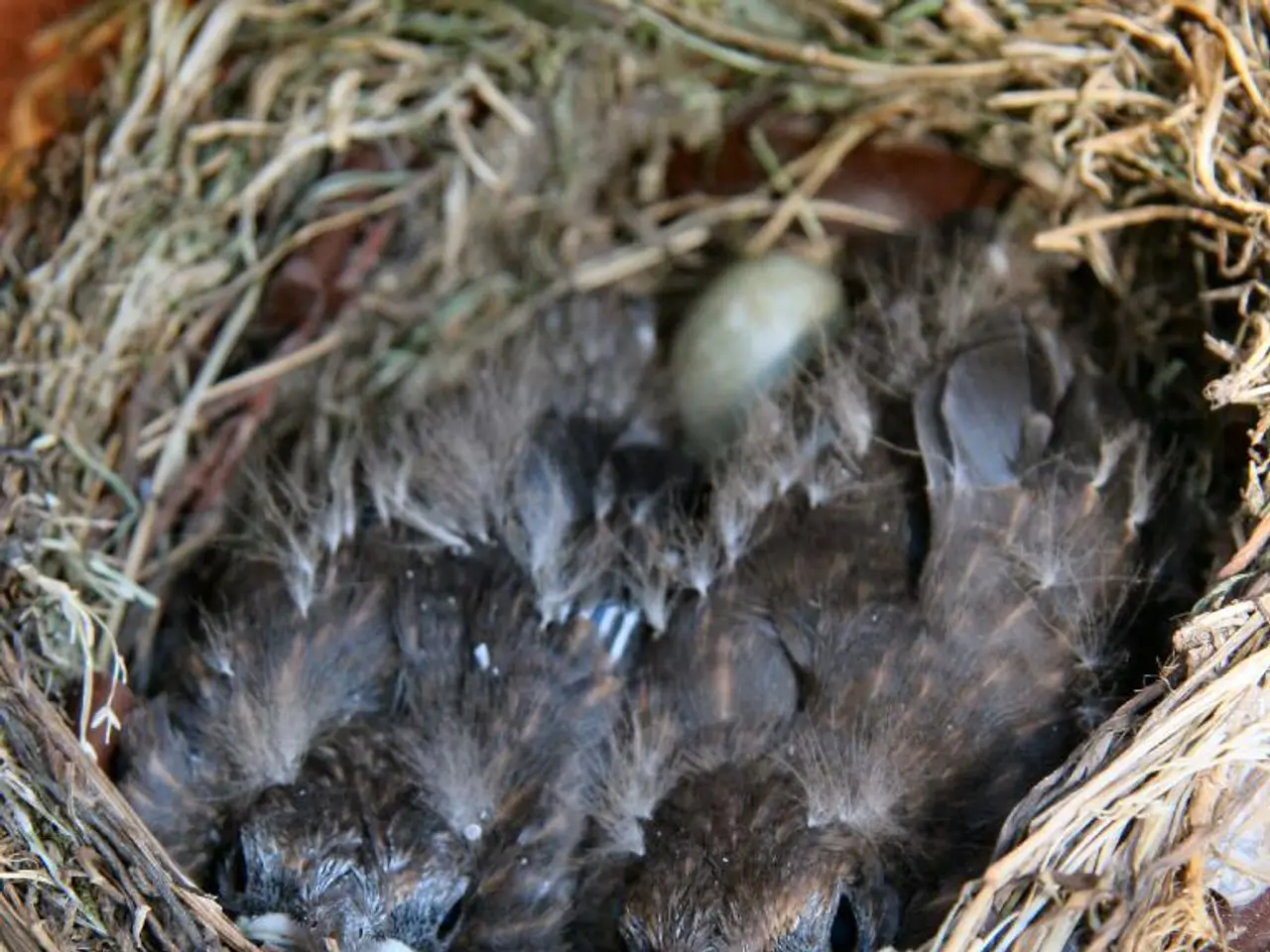Young Bird Care Guide: Recognizing, Assisting, and Supporting Newly Hatched Birds
Caring for Baby Birds: A Guide to Each Developmental Stage
Baby birds, also known as nestlings or chicks, are a sight to behold as they grow and develop. From the egg stage to adulthood, each stage has distinct characteristics that help identify them.
The Egg Stage
The bird's life begins inside the egg. The embryo develops until it’s ready to hatch. If still growing, you may observe subtle movements inside the egg.
The Hatchling
Hatchlings are newly hatched birds, often naked with eyes closed. They are entirely dependent on their parents for survival.
The Nestling
By Day 8-14, baby birds enter the nestling stage. In this stage, the bird grows rapidly, develops feathers (replacing initial downy feathers), and is still cared for intensively by parents while remaining in the nest. The bird becomes stronger and begins to show coordination.
The Fledgling
Around Day 15-25+, baby birds enter the fledgling phase. During this time, they start to develop enough feathers and wing strength to attempt their first flights. Fledglings leave the nest but often stay close to parents for feeding and protection. Flight attempts are initially short and unsteady.
The Juvenile
Post-fledging young birds are capable of flight but not sexually mature. They undergo their first molt, replacing downy feathers with adult-like plumage. Juveniles practice social skills and feeding, but are vulnerable to predators due to lesser skills and experience.
The Sub-adult and Adult
The sub-adult continues to mature, with plumage becoming fully adult-like. Eventually, the bird reaches adulthood, capable of reproduction and full independence.
Identifying the Age of a Baby Bird
To identify the age of a baby bird, look for physical characteristics such as nakedness, open eyes, feathers, and ability to fly or perch. For instance, House Sparrows have pale pink skin and grow gray feathers. American Robins have light blue eggs, are naked at birth, and have speckled feathers.
Caring for Baby Birds
Feeding a baby bird depends on its species and age, but it typically eats a high-protein diet similar to what its wild parents would offer, such as insects, worms, or regurgitated food. Baby birds need to be fed frequently, every 15 to 30 minutes during daylight hours, using a syringe or tweezers to carefully feed them.
If you find a baby bird, assess the situation, try to reunite it with its nest if possible, and contact a local wildlife rescue or rehabilitation center if it appears injured or abandoned. Never feed a baby bird milk or bread, as these can be fatal.
During the fledgling phase, baby birds practice hopping and flapping and start to eat a bit of food themselves. By this stage, they should be able to perch on a branch and fly short distances.
Post-fledging birds are normally fed and guided by parents for a number of weeks. Baby kiwis are unique because they are precocial, meaning they are relatively mature and self-sufficient from birth.
In summary, identifying each stage depends on observing feather development, mobility (flight attempts), dependence on parents, and behavior such as feeding method and coordination. Nestlings stay mostly immobile and in the nest, fledglings begin flying and exploring, and juveniles resemble adults but continue maturing physically and behaviorally.
- Raptors, being larger bird species, have a distinct developmental process compared to hummingbirds and other small birds, yet both require careful observation and specialized care during different stages.
- Taking care of baby hummingbirds is a unique challenge in the realm of health-and-wellness, as their rapid development and high metabolism demand nutrient-dense food and consistent feeding.
- As a responsible parent, it's necessary to educate oneself on the specific needs of various bird species when deciding to raise a baby bird, ensuring a successful integration into the natural world.
- For those interested in expanding knowledge beyond parenting, understanding the science behind bird species' growth patterns and development stages offers precious insights for education-and-self-development.




